By Tobias Bleek
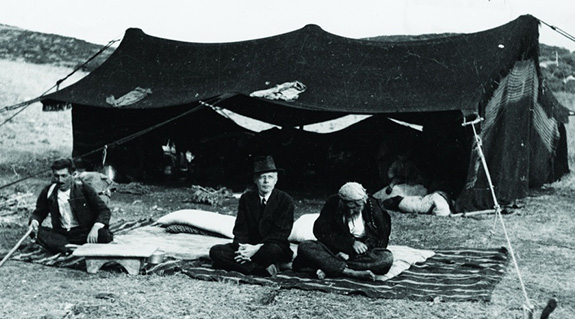
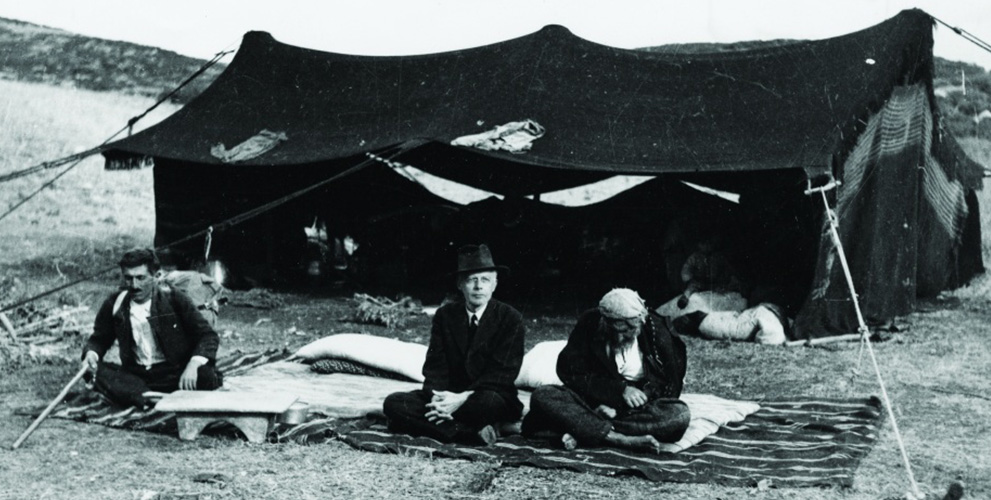
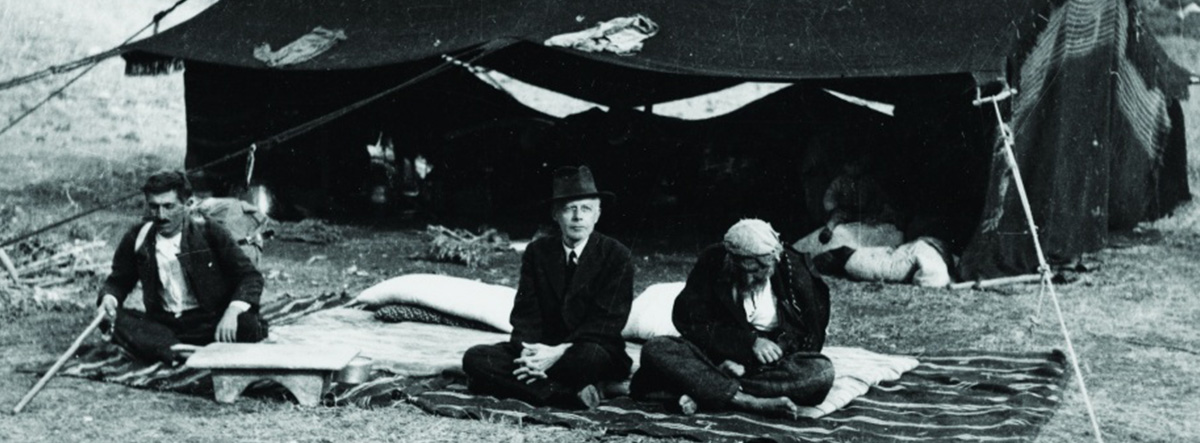
Fieldwork in southern Turkey, 1936
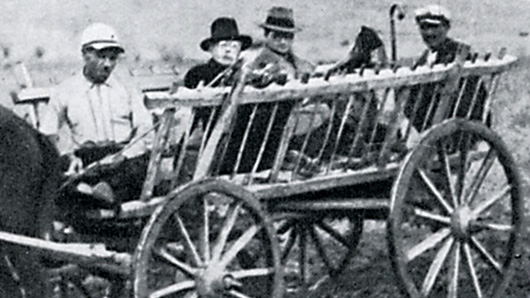
Béla Bartók (second from left) on his last collecting trip to Turkey in November 1936
A large number of the folk melodies that Béla Bartók used in his piano collection For Children were collected by himself. In a lecture from the 1920s, he explains why his field research was not only of vital significance for his understanding of folk music, but also for his creative engagement with it:
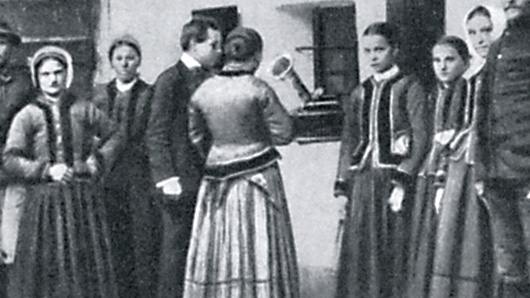
Béla Bartók (fourth from left) with his phonograph collecting Slovak folk melodies (about 1909)
Bartók began collecting folk melodies intensively in 1906. Between June and November, the 25-year-old travelled to different regions of his homeland and recorded several hundred Hungarian and Slovakian melodies. His tools were not limited to a pen and his infallible ears. He took with him the first mass produced sound recording and reproduction device, the phonograph [+], invented by Thomas Alva Edison.
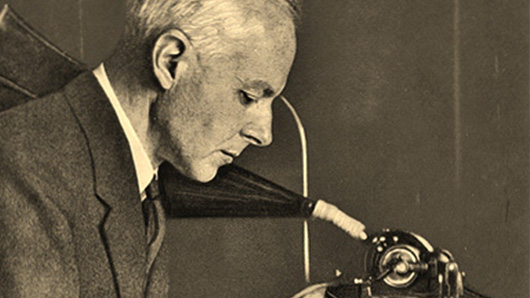
Béla Bartók transcribing folk songs
Thomas A. Edison (1847-1931) the American inventor and entrepreneur patented a device for mechanical-acoustic sound storage at the turn of 1878 under the name "Phonograph" or "Speaking machine". With the help of a cylinder, a sound box and a transmission device (stylus/needle), the sound could be both recorded and reproduced. In contrast to other devices, the phonograph was particularly useful for folk song research because it was easy to transport. Researchers were able to transcribe songs and instrumental pieces at a later date or to check transcriptions originally made on site.
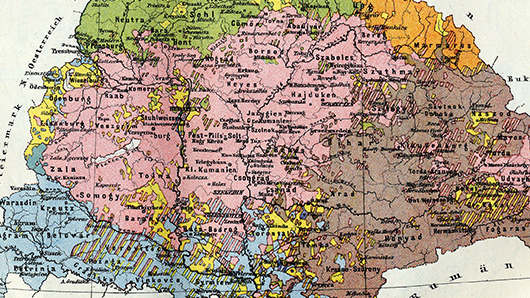
Population and counties in the Kingdom of Hungary
"Counties” (Hungarian: “megye”) are the regional administrative districts into which Hungary is divided. When Bartók began his collecting activities, there were 63 counties in the Kingdom of Hungary including Békés. In his notes, Bartók made it a habit to write down not only the place but also the county where the melody comes from.
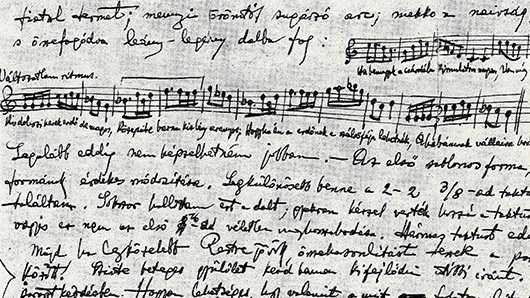
Figure 1: Extract from Bartók's letter (fragment) of November 25, 1906 (Bartók Archives, Budapest)
A revealing fragment of a letter is preserved from Bartók's last visit to Doboz (see Figure 1). On November 25, he reports enthusiastically to an unnamed addressee in Budapest:
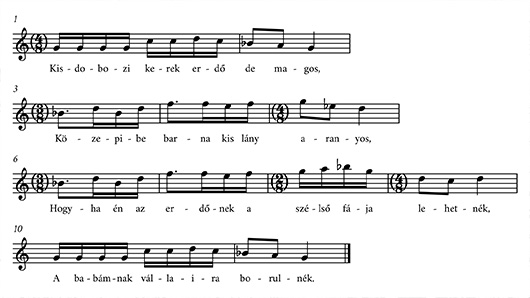
Figure 2: Bartók's transcription of the song "Kisdobozi kerek..." ("The forest by Kisdoboz...") from the letter fragment of November 25, 1906
Bartók was particularly fascinated by the melody which later formed the basis of No. 35 of his piano collection For Children (Explore this composition's interactive score). One of the reasons for his fascination was that it differed from the other performed songs in its individual form and irregular metric structure. Referring to a transcription written down in the letter (see Figures 1 & 2), which is notated in values half the length of the later version (sixteenths/semiquavers instead of eights/quavers, etc.), he explains the peculiarities of the song:
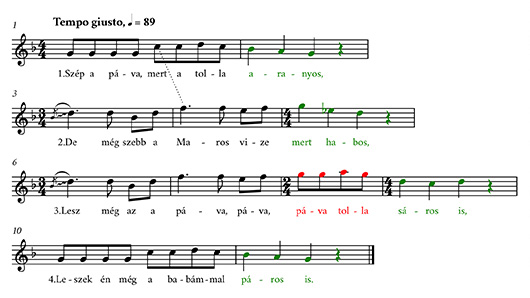
Figure 3: A version of the song melody in doubled note values as Bartók uses it in For Children.
Bartók's remark refers to the irregularity of the two middle phrases (lines 2 and 3) of the song. In the transcription notated in the letter, they each begin with a dotted eighth note, instead of – as in the first phrase – with a semiquaver (see bars 3f. and 6f. in figure 2). The consequence of this temporal stretching is a changed rhythmic structure and an accompanying surprising change of metre (see figures 2 and 3). Instead of one bar of four, two bars of three are heard. The irregularity is further intensified by the deviating length of the third line. In contrast to the other three lines of the verse, it has 15 instead of 11 syllables, which leads to an extension of the third line by an additional bar (bar 8).
In his letter Bartók transcribed the lyrics sung to the melody by the young men and women during their wedding celebration. He later published them in his influential study The Hungarian Folk Song (No. 115). It reads:
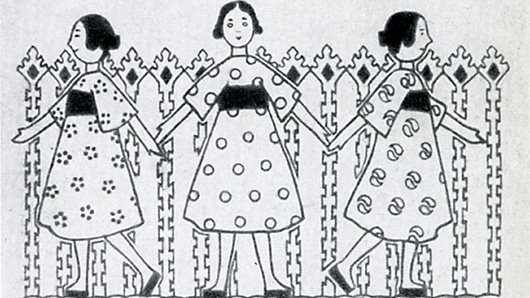
Title page of the first edition of For Children
However, neither one nor the other variant is printed in the appendix of the first edition of For Children (see below). Instead, a text appears that Bartók apparently recorded in August of the same year in Tápiószele, about 70 kilometers east of Budapest. As in many other cases, we can only speculate about the reasons for this decision. This example, however, shows the richness of variation in the folk songs, which, as part of a living, orally transmitted culture, are subject to constant change and often exist in many different textual and melodic versions.
If I go up to the great hill of Buda,
I look down on Kis-Szele;
There I see the, there I see the maidens of Kis-Szele,
Their shoulders are covered by a wreath of pearls. [9]↓
László Vikárius, “Introduction” to the new edition of For Children as part of the Complete Critical Edition of Bartók's works (vol. 37, published 2016 by G. Henle/Editio Musica Budapest)


